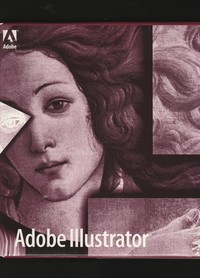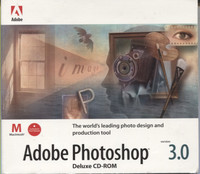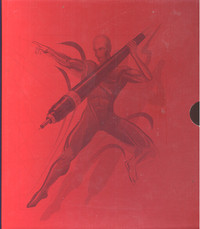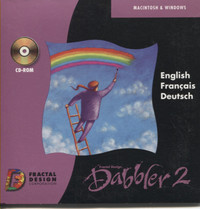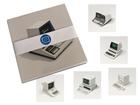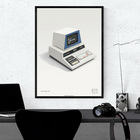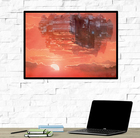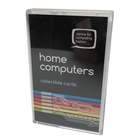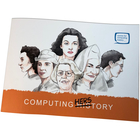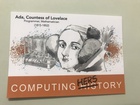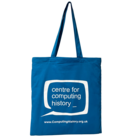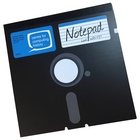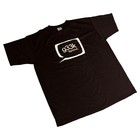Adobe Photoshop 2.0/2.5
| Home > Browse Our Collection > Software > Apple Software > Adobe Photoshop 2.0/2.5 |
|
Adobe Photoshop is a raster graphics editor developed and published by Adobe Inc. for Apple Macintosh and Windows. Since developed in 1988 by Thomas and John Knoll it has become the industry standard not only in raster graphics editing and digital art. Photoshop has become a generic trademark, in "to photoshop an image", "photoshopping". Photoshop has wide functionality: to edit and compose raster images in multiple layers and supports masks, alpha compositing and several color models including RGB (Red, Green, Blue), CMYK (Cyan, Magenta, Yellow, Black as used in printing), CIELAB, spot color, and duotone. Proprietary PSD and PSB file formats support these. In addition to raster graphics, Photoshop can edit or render text, vector graphics, 3D graphics and video. "Plug-ins" (programs independently developed and distributed by third parties run inside Photoshop and offer new or enhanced features. Thomas Knoll, a Ph.D. student at the University of Michigan, wrote a program called Display on his Macintosh Plus to display grayscale images on a monochrome display. His brother John, working at Industrial Light & Magic encouraged Thomas to develop it into image editing program which they collaborated on. Thomas tried to rename the software ImagePro, but the name was already taken, so it became Photoshop. Initially there was a deal with scanner manufacturer Barneyscan to distribute copies with a slide scanner. John gave a demonstration of the software to engineers at Apple and Russell Brown, art director at Adobe. Adobe decided to purchase the license in September 1988. John worked on plug-ins while Thomas wrote the code. Photoshop 1.0 was released on February 19, 1990, for Macintosh exclusively. The handling of colour slowly improved and Photoshop the industry standard in digital color editing. At the time Photoshop 1.0 was released, digital retouching on dedicated high-end systems (such as the Scitex) cost around $300 an hour for basic photo retouching. The list price of Photoshop 1.0 for Macintosh in 1990 was $895. Photoshop was initially only available on Macintosh. In 1993, Adobe chief architect Seetharaman Narayanan ported Photoshop to Microsoft Windows. so that it reached a wider audience. On March 31, 1995, Adobe purchased the rights for Photoshop from Thomas and John Knoll for $34.5 million. Photoshop's naming convention was based on version numbers, from version 0.07 (codename "Bond"; double-oh-seven), through version 0.87 (codename "Seurat" which was the first commercial version, sold as "Barneyscan XP"), version 1.0 (February 1990) to version 7.0.1. Adobe published 7 major and many minor versions before the October 2003 introduction of version 8.0 which brought with it the Creative Suite naming. Milestones are: Filters, Colour Separation, Virtual Memory (1.0), Paths, CMYK color (2.0), 16-bits-per-channel support, availability on Microsoft Windows (2.5), Layers, tabbed Palettes (3.0), Adjustments, Actions, Freeform Transform, PNG support (4.0), Editable Type, Magnetic Lasso and Pen, Freeform Pen, Multiple Undo, Layer Effects (5.0), Save For Web (5.5), Vector Shapes, revised User Interface (6.0), Vector Text, Healing Brush, Spell Check (7.0), Camera RAW (7.0.1). Adobe Photoshop 2.0 (code named "Fast Eddy") was the second major version of Photoshop, released in June 1991. It featured an upgraded user interface and was the last version to support Macintosh System 6.0.4. New features were: Paths; CMYK color; Encapsulated Postscript (EPS) Rasterization where EPS is a document format that conforms to Document Structuring Conventions (DSC) in order to be usable as a graphics file format. This item includes the 2.5 upgrade. Adobe Photoshop 2.5 was a major update to Photoshop 2.0 that was released in November 1992 for Macintosh (code named "Merlin"), and for the first time for Windows (code named "Brimstone"). It included new features such as 16-bit per channel support, palettes and "Deluxe" edition was available on CD-ROM.
Related Items in the Collection:Other Software by Adobe:
Information About Adobe:
This exhibit has a reference ID of CH31829. Please quote this reference ID in any communication with the Centre for Computing History. |
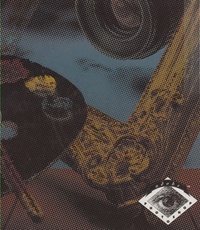 Click on the Images
Click on the ImagesFor Detail
|


